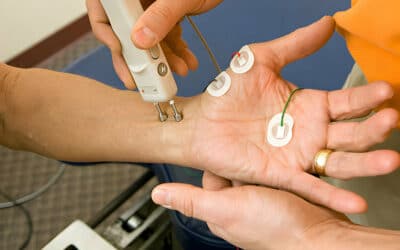Discover the Most Common Causes of Kyphosis
Kyphosis is a spinal condition characterized by an abnormal curvature forward in the upper spine, which causes a hunchback. The most common symptoms include back pain, stiffness, and neck aches.
People with kyphosis need adequate treatment to alleviate the symptoms and prevent further degradation of the spine. The treatment type depends on the underlying cause and symptom severity.
Read on to discover what causes kyphosis and where to find a kyphosis doctor to prescribe the right treatment.
How to Know If You Have Kyphosis
Many people with kyphosis don’t even realize they have it. They only suspect something is off when the forward curvature becomes obvious and other symptoms like back and neck pain emerge.
In more severe cases, the spine can curve so much that it starts putting too much pressure on spinal nerves and internal organs. You need to visit a doctor as soon as you notice your spine is out of neutral position to get the appropriate treatment and prevent the condition from getting worse.
The Most Common Causes of Kyphosis
Your spine consists of bones (vertebrae), spinal cord, nerves, and discs. A condition usually initiates vertebrae degeneration, causing your spine to curve forward. The most common causes of kyphosis include osteoporosis, disc degeneration, Scheuermann’s disease, poor posture, and others.
Osteoporosis
Osteoporosis is the most common cause of kyphosis, and this condition is characterized by weak and porous bones. It mostly occurs in older adults when bones lose some of their density, which makes them more susceptible to fractures.
Vertebrae become softer because of osteoporosis, which causes them to compress and leads to the onset of kyphosis. They become wedge-shaped compared to a standard cylinder shape. The front of the vertebrae becomes flat, causing your spine to shift forward.
Disc Degeneration Disease
Discs are soft cushions positioned between vertebrae to reduce the pressure on the spine. Unfortunately, these discs can shrink and flatten as you age, contributing to the onset of kyphosis.
Fractures
Spinal injuries and fractures can result in an abnormal curvature of the spine. Minor fractures usually don’t contribute to the onset of kyphosis. However, traumas like falls, sports injuries, and car accidents can result in problematic fractures that lead to kyphosis.
Scheuermann’s disease
Scheuermann’s disease or Scheuermann’s kyphosis usually occurs in teens during growth spurts, when the vertebrae don’t develop a regular shape. As a result, the spine can shift forward, causing a more rigid curve.
Poor Posture
Poor posture during childhood and teenage years can lead to kyphosis. For example, slouching, carrying a heavy backpack, leaning back in a chair, and other habits cause the muscles and ligaments in the back to overstretch. As a result, they can pull the vertebrae out of normal position and lead to postural kyphosis.
How Can a Kyphosis Doctor Help?
A spine doctor can run imaging tests to confirm your kyphosis diagnosis and determine the underlying cause. Then, they can create a personalized treatment plan to help strengthen your back muscles and alleviate symptoms.
Space City Pain Specialists provides expert medical care to people struggling with painful conditions. Our team of experts consists of board-certified pain medicine doctors, ready to help you restore your spine to its natural position.
Click here to learn how you can contact us and schedule an appointment that will change your life.



